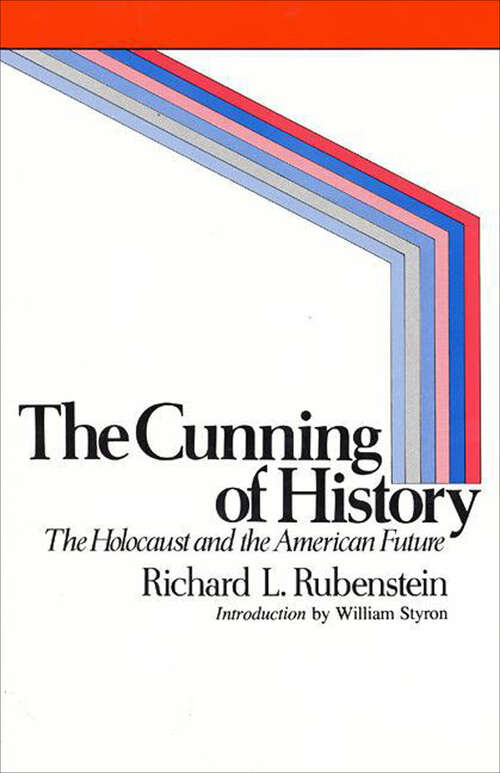The Cunning of History: The Holocaust and the American Future
By:
Sign Up Now!
Already a Member? Log In
You must be logged into Bookshare to access this title.
Learn about membership options,
or view our freely available titles.
- Synopsis
- Theologian Richard L. Rubenstein writes of the Holocaust, why it happened, why it happened when it did, and why it may happen again and again."Few books possess the power to leave the reader with the feeling of awareness that we call a sense of revelation. The Cunning of History seems to me to be one of these . . . Rubenstein is forcing us to reinterpret the meaning of Auschwitz—especially, though not exclusively, from the standpoint of its existence as part of a continuum of slavery that has been engrafted for centuries onto the very body of Western civilization. Therefore, in the process of destroying the myth and the preconception, he is making us see that that encampment of death and suffering may have been more horrible than we had ever imagined. It was slavery in its ultimate embodiment. He is making us understand that the etiology of Auschwitz—to some, a diabolical, perhaps freakish excrescence, which vanished from the face of the earth with the destruction of the crematoria in 1945—is actually embedded deeply in a cultural tradition that stretches back to the Middle Passage from the coast of Africa, and beyond, to the enforced servitude in ancient Greece and Rome. Rubenstein is saying that we ignore this linkage, and the existence of the sleeping virus in the bloodstream of civilization, at risk of our future." — William Styron, from the Introduction.
- Copyright:
- 1975
Book Details
- Book Quality:
- Publisher Quality
- Book Size:
- 128 Pages
- ISBN-13:
- 9780061852893
- Related ISBNs:
- 9780061320682
- Publisher:
- HarperCollins
- Date of Addition:
- 12/17/23
- Copyrighted By:
- Richard E. Rubenstein
- Adult content:
- No
- Language:
- English
- Has Image Descriptions:
- No
- Categories:
- History, Military, Nonfiction, Sociology
- Submitted By:
- Bookshare Staff
- Usage Restrictions:
- This is a copyrighted book.
- Introduction by:
- William Styron
